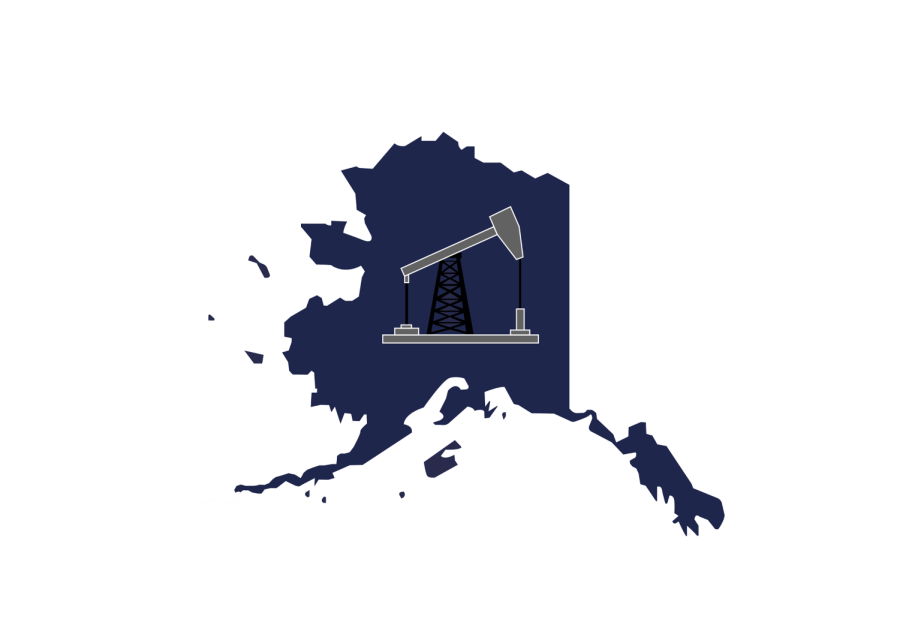The Willow Project: Carbon Bomb or the Future of Oil?
A digitally constructed image created by Cosmo Tafolla showcases an oil mining drill upon the state of Alaska. “It could be argued that this much money, materials and labor could be better spent on less environmentally damaging energy sources,” environmental science teacher Andy Bradstreet said.
April 20, 2023
The Willow project allocates eight billion dollars to produce 629 million oil barrels with the intention of expanding the fossil fuel market. The plan proposed is estimated to release 277 million tons of carbon dioxide, fueling a debate about its effect on the Alaskan landscape and life.
Environmentalists call this the “carbon bomb,” and the oil industry refers to it as the “future of oil,” however, in short, the Willow project is a plan curated by the oil company of ConocoPhillips to drill into Alaska’s Western Arctic.
“The Arctic is already warming faster than anywhere else on the planet, and the Willow Project would be a carbon bomb,” Wendy Wendlandt, president of Environment America, states in a letter to its membership.
Proposed by ConocoPhillips and originally approved by the Trump administration in 2020, ConocoPhillips, a Houston-based energy company that has been exploring and drilling for oil in Alaska for years. Oil drilling operations are currently underway in Alaska’s National Petroleum Reserve (NPR-A.)
During his 2020 presidential campaign, Biden vowed to end new oil and gas drilling on public lands and waters – which he initially carried out as part of an early executive order.
However, the drilling pause was struck down when a federal judge in 2021 determined that they could not legally reject or reduce the project without steep fines and legal action from Conoco. As a result, the Biden administration has extended several areas for further drilling.
The Willow project has provoked controversy among Alaskan indigenous groups, leading to national rallies by environmental groups.
“Approving this project in defense of private companies is not fair,” senior and Environmental Club member Catalina Zuo said. “The government’s number one priority should be protecting our country and its future, but now it’s failing to uphold that.”
However, more than one million written letters reached the White House in protest, and five million people signed a Change.org petition. Some of those that signed the proposal were incentivized to put an end to it with the promise of employment from the project’s developer.
Willow advocates, including Alaska Senator Dan Sullivan, pledged that Willow will produce fossil fuel more sustainably than seeking oil from other countries such as Saudi Arabia and Venezuela.
“It will increase our domestic production of oil,” AP Environmental Science teacher Andy Bradstreet said. “And [lessen] our reliance on foreign sources of fossil fuels.”
Yet, in direct contrast, by the administration’s own estimations, the project would generate enough oil to release the equivalent of adding two million gas-powered cars to the roadways.
“The oil produced from this project, and its associated financial benefit, is likely years away from being realized,” Bradstreet continues. “It could be argued that this much money, materials and labor could be better spent on less environmentally damaging energy sources.”
Limited by regulations governing the NPR-A, the Biden administration green-lighted the Willow project on March 13 and construction can begin. However, it is unclear exactly when that will happen, in large part due to impending legal challenges.
Shutting down fossil fuel infrastructure projects after they have been approved by the federal government has been done before — and the Willow project faces the same fate.
“Social media, for all its downsides, does have the power to move the needle with the general public and policymakers,” Bradstreet continued. “So let your voices be heard on issues that you care about.”










